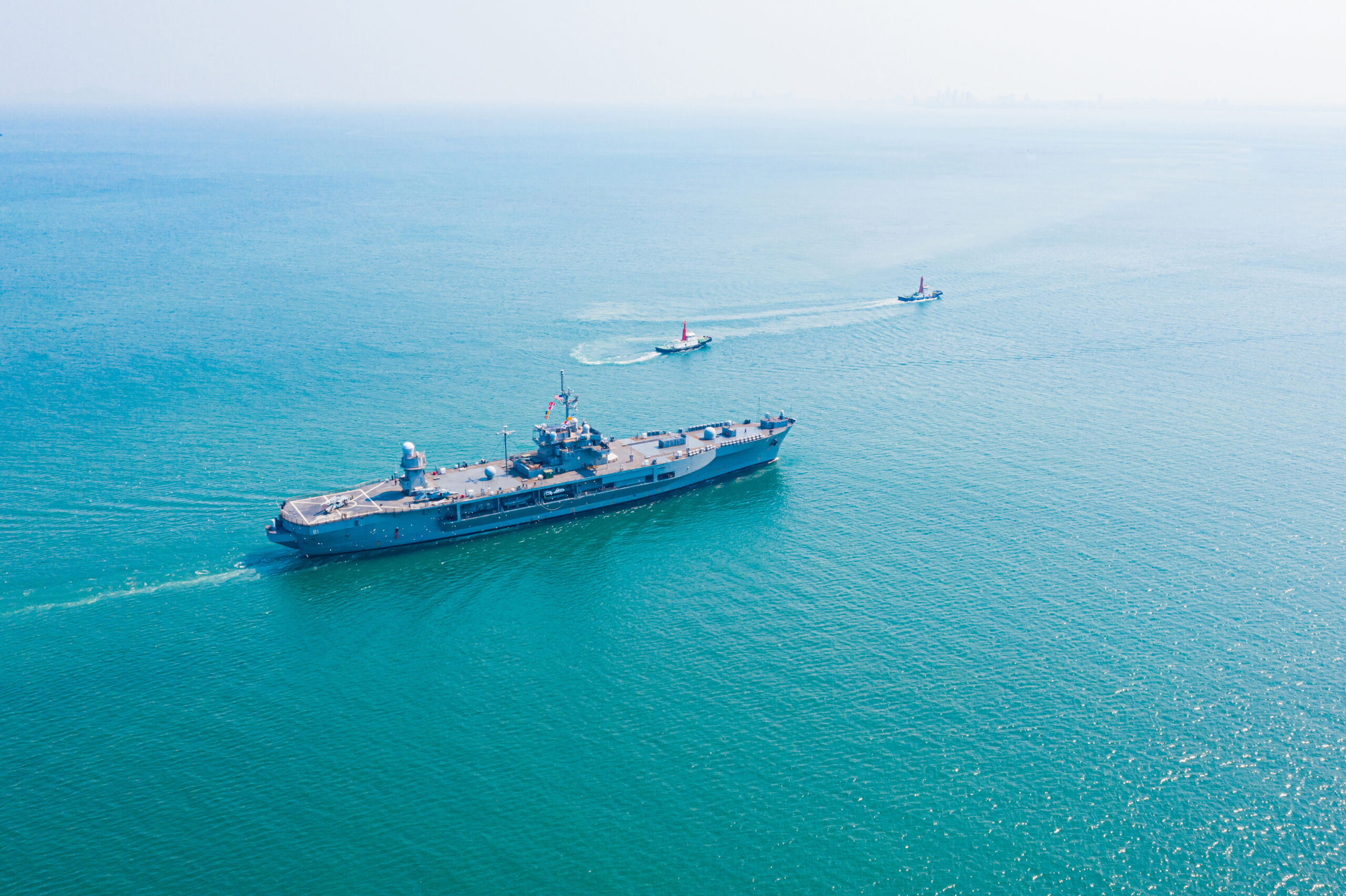Defense contractors and military equipment suppliers depend upon CNC machining. Industries that manufacture products for military uses need to fabricate reliable components while often requiring incredibly tight tolerances. Many critical components within military aircraft, radar systems, vehicles for the armed forces, warships, and weapon systems are made via CNC machining. Industries that also make products for civilians, like the aerospace, automotive, and maritime sectors, benefit from this technology, much of which eventually gets co-opted. This shows how CNC machining is used, offering a versatility that keeps the members of our military safer and improves non-military products.
CNC Machining for Industries: 5 Applications for Military & Defense
Though military requirements for equipment and supplies can vary, products manufactured for the defense industry must be able to operate effectively in the harshest environments. This requires that equipment be rugged enough to withstand conditions regularly that most civilian gear cannot handle. Because of the specialized nature of CNC machining, industries in the defense sector often seek to outsource the production of precision parts they make for the military.
A subtractive manufacturing process developed in the mid-20th century, CNC machining for industries has advanced considerably, with CNC technology having firmly arrived in the 21st century. The use of computerized controls that manage machine tools to form a workpiece is aided by modern manufacturing methods like DFMA (Design for Manufacture and Assembly) that help optimize machining processes. This involves preprogramming CNC machines to produce components, which is done without any manual intervention. CNC machines follow these computerized instructions, working at high speeds to perform various machining operations. Five areas in which CNC machining for industries that manufacture for the military include aerospace, detection systems, naval craft, military vehicles, and weapons systems.
Aerospace
Regarding CNC machining, industries like aerospace require tight tolerances for components, regardless of whether an aircraft is civilian or military. However, for fifth-generation military planes like the F-35, stealth is also important to avoid detection by radar systems. Stealth aircraft require even closer tolerances than civilian or non-stealth military planes, as even minor mismatches between parts would allow an F-35 to show up on radar, potentially leading to it being targeted and shot down.
This is why Lockheed Martin, the maker of the F-35, relies on CNC machining. Industries like the aerospace sector depend on precision manufacturing for their components, which other fabrication methods can’t match. For example, Lockheed Martin uses a 5-axis milling machine for precision-machining operations on the composite skin of the F-35 and other military aircraft it makes. These machines can also work with the complex geometries of carbon fiber composite parts reinforced by fibers, with a single machine programmed to build multiple parts.
Military applications are nearly endless regarding CNC machining processes for industries manufacturing for the sector. Take Northrop Grumman, another aerospace defense contractor and iconic B-2 stealth bomber maker. The company also uses 5-axis CNC machines for drilling holes and trimming parts for fuselage skins, with new technology that allows work to be completed in about a third of the time. The defense contractor even conducted their research on the functions of CNC machining in industries that manufacture aerospace parts and products for military applications.
Northrop Grumman found CNC manufacturing for military aerospace applications requires:
- Exact repeatability of processes by machine tools
- Quick responsiveness of machine tools
- Reliable and robust CNC machine design
- Stability of the machine’s foundation
- Tight control of temperatures and environmental conditions in the facility
Advances in CNC machinery have made modern CNC machines indispensable for military applications, as there’s no other technology that can match the accuracy combined with the quickness and efficiency of the process. This precision extends even to unmanned aircraft. General Atomics, makers of the Predator drone, enthusiastically endorses CNC technology. The company used a 5-axis CNC machining for core cutting requirements for the aircraft.
Detection Systems
In contrast CNC machining in industries like aerospace, radar, and other detection systems seek to identify and track aircraft. Radar systems also have civilian use and are used to control and track the flights of commercial airliners. In defense applications, these detection systems are integral for defending military facilities against airstrikes from enemy aircraft and missiles. To work flawlessly, radar dishes and radomes, the structures that protect radar systems in inclement weather, must feature smooth finishes.
Radar systems benefit from the cutting-edge manufacturing methods provided by modern CNC machining. Industries in the civilian sector also require components with uniquely curved dimensions like those used in radar systems, but military radar systems need to withstand even more rigorous applications on the battlefield. Often, radar systems are made from various metals and alloys, which require CNC machines to be versatile enough to handle their machining.
CNC milling is also often used to fabricate the casings surrounding these detection systems, with many integrated into military vehicles or naval craft. Modern warfare also uses sophisticated electronic systems that track and prevent drones from operating correctly. CNC machining techniques are used in the production of circuit boards, microwave antennas, and waveguides, along with other components for radar systems.
Military Vehicles
In recent military conflicts, armored vehicles have played an important role in combat. Main battle tanks like France’s main battle tank – the Leclerc – rely heavily on CNC machining. Industries that manufacture vehicles for the military often use CNC technology to fabricate components such as the tank’s gun cradle, gun mantlet, turret ring, and engine components. All these parts require tight tolerances to fit closely with others so that the tank drives and functions correctly. Though armored vehicles are most heavily reliant on CNC machining, industries like the automotive sector also use this technology, so it can serve in producing unarmored military vehicles as well.
Naval Craft
Modern warships and other naval craft use CNC machining for key components in communication, propulsion, weapons systems, propellers, radar arrays, shafts, and turbines. As CNC machines can be used for a wide range of metals, composites, or alloys, they can be used to customize complex components more easily. Additionally, CNC machining can be used in multiple types of surface finishes that help components of naval craft withstand corrosive maritime conditions.
Weapons Systems
Though the modern defense sector uses CNC machining, industries have used this technology for decades to manufacture weapons systems. In fact, both the US Navy and UK’s Royal Navy use the Tomahawk missile system, which was first used in the Gulf War in the early 1990s. The original missile manufacturer, General Dynamics, used 4-axis CNC machines. For modern iterations of the Tomahawk, now made by Raytheon, multiple-axis machines can fabricate the missile’s skin in a single session without stopping.
Such large weapons systems require durable materials that can withstand the torque of missile launches. They also need to endure conditions on the ocean-going vessels they normally use, including tolerating high underwater pressures in submarines. These days, Raytheon uses a 6-axis robot to fabricate these 20-foot-long missiles on its own. This negates the need for most manual labor in the process, which such heavy manufacturing could prove hazardous. Using automation results in weapon systems that are more precise and inexpensive while it also speeds up production.
A Look at Staub Precision Industries’ CNC Machining Capabilities
There are many different methods of CNC machining. Industries use CNC milling and turning techniques for cutting and drilling operations, which can be done on 3-axis, 4-axis, and 5-axis machines, though some machines can work on even more axes for more complex components or to speed production. Staub’s production facilities and machinery allow us to conduct CNC turning, milling, and even EDM (electrical discharge machining) operations, among other services.
Staub’s military capabilities extend to CNC machining military components such as:
- Actuator arms for night vision goggles made with wire EDM machining methods
- Blade cutters for cutting safety cable made with 5-axis CNC milling
- Load sleeves for cable clamps made via 5-axis CNC milling
- Paddles for actuator arms that utilize 4-axis CNC machining
- Parachute wire cutters made with 3-axis CNC milling methods
- Pawls for carriage lock using 4-axis CNC milling techniques
- Pawls for the leg locks on antenna bases made via conventional milling methods
- Pivot balls for military aircraft using CNC turning techniques and spot welding
- Plenum bases to assist with fuel flow made via wire EDM machining
- Read heads for signal encoders made via 5-axis CNC milling and grinding
- Release clips for weapon system pivot assemblies made with 3-axis CNC gang milling
- Shell receptacles for heat-resistant connectors fabricated via 3-axis CNC milling
And these are just a few examples of Staub’s capabilities – we can handle just about any CNC project needed. If you want to learn more about the advantages we bring to the table with our CNC machining for industries that manufacture defense-related products, contact the machining experts at Staub today.



